Science Daily News | 25 Jun 2023

Views (120)
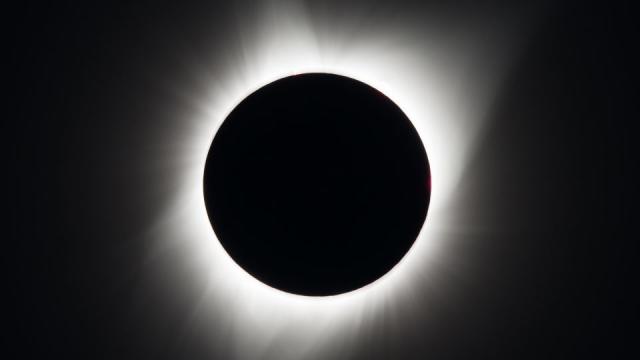
Rocket Lab to recover booster from ocean after July 14 launch
Rocket Lab plans to recover the first stage of its Electron rocket after its next launch, a seven-satellite rideshare mission targeted for July 14.

Rocket Lab's next mission will feature a booster recovery at sea, if all goes according to plan.
Analysis of that booster, and a handful of previously recovered rockets, suggests that the currently expendable Electron can indeed be made partially reusable, Rocket Lab has said.
Related stories:
"Starling will demonstrate technologies for in-space network communications, onboard relative navigation between spacecraft, autonomous maneuver planning and execution and distributed science autonomy — an experiment for small spacecraft to autonomously react to observations, paving the way for future science missions," Rocket Lab wrote in the June 22 statement.
The Electron will also launch the LEO 3 demonstration satellite for the Canadian communications company Telesat and two cubesats for Virginia-based Spire Global, which operates a constellation that observes Earth in radio frequencies.
Watch the moon's shadow travel across North America during 2024's total solar eclipse (video)
This flyover animation of the Great North American Solar Eclipse shows the path of the moon's shadow and where you need to be located to see the total solar eclipse on April 8, 2024.
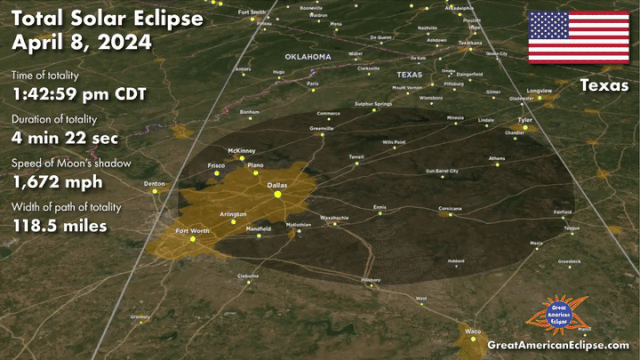
A total solar eclipse will be visible across North America on April 8, 2024.
What is a solar eclipse?
"To make your duration of totality longer, travel to the center of the path of totality closest to you. " Zeiler told Space.com in an email. "You’ll never regret the travel to see totality, nature’s greatest sight".
"If you see a curve on an eclipse map that says 99%, don’t think that means a total eclipse. 99% partial eclipse = 0% total eclipse! The difference between being inside and outside the path of totality is absolutely night and day." Zeiler continued.
Related stories:
Many weeks and multiple data sets were required to create the impressive flyover animation.
He then rendered the moon's shadow, frame-by-frame, on the topography of the area.
"In the mountainous parts of the path in Mexico, you’ll see how the shadow edge responds to mountain elevations," Zeiler said.
"The last work in creating the animation took about 3 weeks."
During that time Zeiler simulated the arc of an imaginary spacecraft following the moon's shadow.
This NASA map shows the paths of the annular "ring of fire" solar eclipse of Oct. 14, 2023 (left) and the April 8, 2024, total solar eclipse. Click the top right corner to expand full screen. (Image credit: NASA/Scientific Visualization Studio/Michala Garrison; eclipse calculations by Ernie Wright, NASA Goddard Space Flight Center)
During both the annular solar eclipse of 2023 and the total eclipse of 2024, all 48 contiguous states of the U.S. — the lower 48 states on the North American continent — will see at least a partial eclipse whereby part of the sun is obscured by the moon's shadow.
What scientists say keeps mosquitoes at bay
Here’s the lowdown on how mosquitoes hunt us, what attracts them, and what scientists recommend for keeping them at bay.
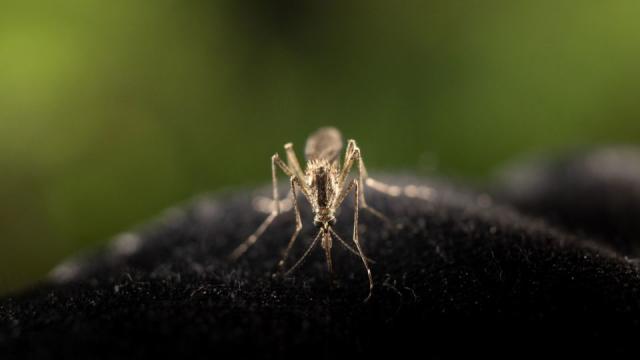
For as long as there have been humans, there have been mosquitoes buzzing around in hopes of a bite to eat.
“We’re always in a war, a perpetual war against mosquitoes,” said Dr. Conor McMeniman, an assistant professor of molecular microbiology and immunology at the Johns Hopkins Bloomberg School of Public Health and Johns Hopkins Malaria Research Institute in Baltimore.
Even if the mosquitoes near you don’t carry these diseases, they’re still a nuisance. Here’s the lowdown on how mosquitoes hunt us, what attracts them, and what scientists recommend for keeping them at bay.
Most of the time, mosquitoes drink plant nectars and juices, and even help pollinate flowers. But when the time comes for female mosquitoes to produce eggs, the soon-to-be moms require extra protein, which they get by drinking blood.
“When a mosquito bites, it’s actually sticking its mouth parts into your skin and probing around in the skin to actually find a blood vessel,” McMeniman said. Once it hits sanguine pay dirt, the mosquito sucks up red blood cells and plasma like it’s guzzling bubble tea through a straw.
Mosquitoes kill more people than any other animal as they spread diseases such as malaria, dengue fever and West Nile virus. - Olivier Morin/AFP/Getty Images
It’s to the mosquito’s advantage to drink quickly and then buzz off undetected. To accomplish this, “mosquitoes spit into the skin a whole cocktail of different proteins” that act as painkillers and anticoagulants that keep the blood from clotting, he said. The itchiness and discomfort from mosquito bites — a result of our bodies’ inflammatory response to this chemical cocktail — only come later, when the perpetrator is no longer at risk of getting swatted.
People have different reactions to mosquito bites — one person can emerge from a barbecue relatively unscathed with a couple of pimple-like spots, whereas a friend is stuck nursing dozens of silver dollar-size welts for the following week.
“How attractive you think you are to mosquitoes might not necessarily correlate with how attractive you actually are to the mosquitoes,” McMeniman said. “Some of that is driven by the perception of your reaction to the mosquitoes and whether you’re itching.”
“There could be a variety of factors that might influence the composition of your scent,” McMeniman said, “including your underlying diet and genetics and physiology. All of these things could potentially influence the types of molecules emitted by the human body and also influence the composition of the microbiome that lives naturally on our skin.”
It’d be nice simply to replicate the odor profile of the people whom mosquitoes avoid and sell it as a body spray to those with the dubious honor of being “tastier,” but at this point, it’s not realistic. “We’re still trying to understand the chemistry of this process,” he said.
While the fine details of which scents draw mosquitoes in are still being explored by researchers, there’s a general pattern to the insects’ ability to find us.
“First they smell you, then they see you, and then when they’re close enough, maybe within a meter of the host, they can actually detect thermal cues dissipating from your skin,” McMeniman said. One of the most important scents that draws mosquitoes in from far away is carbon dioxide, the gas that we exhale when we breathe.
The itchiness and discomfort from mosquito bites come later when the perpetrator is no longer at risk of getting swatted. - Rick Bowmer/AP
“As a universal, most of them are attracted to CO₂ from a long distance,” said Dr. Kristen Healy, an associate professor of entomology at Louisiana State University and president of the American Mosquito Control Association. “There’s been plenty of studies to show that CO₂ from our breath as we exhale, and especially when you get large groups together” can attract mosquitoes. Body heat and sweat also seem to play a role.
Based on her own experiences, Healy said this hypothesis has held up. “If I’m active and I’m sweating, I definitely will notice a difference in mosquito attraction because they can cue into those other extra odors,” she said.
“It would be really useful to scale those studies up to see how general these findings are across different hosts,” McMeniman said. Until then, you probably shouldn’t throw out all your red shirts and dump all your beer just yet.
Perhaps as a result of the complexity and unsolved mysteries around mosquito attraction, there are countless devices and sprays that promise to drive the insects away. Newfangled gadgets such as ultrasonic mosquito repellent devices are “not necessarily backed by research and science, and they’re kind of just out there on the market,” Healy said. “I would never trust a product that says it’s 100% effective at killing mosquitoes.”
Devices that spray insect repellent over a larger area can be effective, but “I think it’s worth noting that these are insecticides — obviously, they’ve passed EPA (US Environmental Protection Agency) registration standards, but you are walking around in a cloud of insecticide,” McMeniman said.
No silver bullet exists to protect yourself from mosquito bites, but get a good bug spray and reapply it as needed. - Liudmila Chernetska/iStockphoto/Getty Images
Instead, Healy and McMeniman recommend more tried and true methods.
To keep mosquitoes out of your home, make sure your windows are screened and run a fan or air conditioner at night. CIear away debris and drain standing water in your yard on a weekly basis to prevent mosquito eggs from hatching.
Ultimately, there’s no silver bullet that will protect you from mosquito bites. As tantalizing as the information yielded by various studies may be, there’s no simple diet to follow, color to avoid or scent of soap to wash with that will drive mosquitoes away.
Mosquitoes are a part of the natural world, and interacting with them is part of coexisting on our planet. Get a good bug spray and remember to reapply it as needed.
Sewerby Hall and Gardens: Penguin chick enjoys first dip in enclosure
The Humboldt chick was born at Sewerby Hall and Gardens near Bridlington in April.
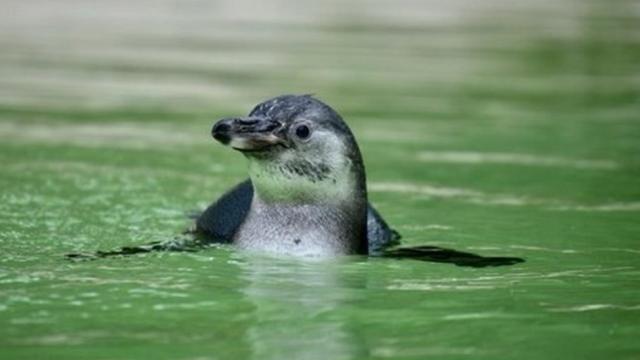
A penguin chick has been pictured taking its very first dip.
Parents Sigsbee and Twinnie watched as their chick ventured out of its nest and took the plunge on Friday at Sewerby Hall and Gardens near Bridlington in East Yorkshire.
Head zookeeper John Pickering said: "We're thrilled to see the chick take its first swim. I'm sure this will be a special sight for our visitors."
The yet-to-be-named Humboldt chick was born on 8 April.
Mr Pickering added: "Its parents are very proud to see their baby growing up and starting to explore the enclosure."
The Humboldt chick will be given a name once its sex is known, he explained.
Keepers are unable to tell whether it is a male or female until it loses its baby feathers and the formation of its head becomes apparent.
Her grandchild is already proving a big hit with visitors to zoo, according to the attraction.
Native to South America, Humboldts can live up to 20 years in the wild and are classed as "vulnerable to extinction".
The benefits and risks of deep-sea exploration
This week, dive into a brief history of deep-sea exploration, come face-to-face with a 1,300-year-old Anglo-Saxon teen, prepare for the 2024 total solar eclipse, and more.
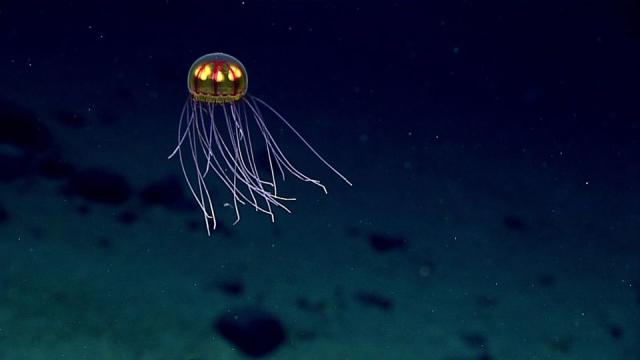
As humans, we seek to explore the unknown.
This motivation, propelled by curiosity and the quest for knowledge, is why we venture beyond the familiar spaces of our everyday lives.
The beginning of humanity was marked by migration. Many early humans began their trek out of Africa tens of thousands of years ago, eventually settling in just about every corner of the planet.
A bioluminescent jellyfish is shown in an image taken during exploration of the Marianas Trench Marine National Monument. - NOAA Office of Ocean Exploration/AP
The deep ocean is an alien landscape that scientists have only just begun to understand.
Miles beneath the waves, the seafloor is home to life that doesn’t exist anywhere else on the planet, including organisms that glow with bioluminescence and cluster around hydrothermal vents for food and energy.
So much remains to be explored because reaching the bottom of the ocean is an incredibly difficult task. Deep-sea vessels must be able to navigate intense darkness, pressure, cold temperatures and challenging terrain.
But the ocean depths have much to offer, including lifesaving compounds and the secrets of how life on Earth evolved.
The event is nearly 10 months away, but people are already anticipating the total solar eclipse that will pass over Mexico, the US and Canada on April 8, 2024.
For those able to be within the path of totality, the moon will completely block the face of the sun, turning daytime surroundings into night for a few minutes.
The Trumpington Cross found at the burial site was believed to have been unearthed for the first time since the seventh century. - University of Cambridge
When a teenage Anglo-Saxon girl died in England about 1,300 years ago, she was laid to rest in a way that suggested she was an aristocrat or royalty.
Her grave was uncovered in 2012 near the village of Trumpington, but researchers are still trying to unravel the mysteries surrounding her identity.
So far, chemical analysis of her bones has helped UK researchers determine that she traveled to England from the Alps in what is now southern Germany sometime in the seventh century. She was buried with a rare gold and garnet-encrusted cross.
Abortion hasn’t always been the controversial quagmire of conflicting opinions, politics and legalities that it is today.
Instead, the practice was more common than people might think in premodern times, appearing in Greek plays, on Roman coins, within the medieval biographies of saints and inside Victorian pamphlets.
Across time, different plants were associated with ending unwanted pregnancies. The first recorded extinction in world history was traced to such a plant, which disappeared due to its value, in ancient Rome.
The Geminid meteor shower streaks across the night sky over the Lhasa River in Tibet on December 14, 2022. - Jiang Feibo/China News Service/Getty Images
On the cold, clear nights of mid-December, glowing yellow meteors can usually be seen streaking across the sky.
Astronomers consider the Geminid meteor shower to be one of the scintillating highlights of the year, but the origin of the shower has posed a bit of a cosmic mystery. Rather than a comet, the celestial event seems to stem from an odd type of asteroid.
These intriguing stories may catch your eye:
What to expect during the 2024 total solar eclipse
A total solar eclipse will cross Mexico, the US and Canada on April 8, 2024. Here’s everything you need to know about how to watch, where to see it and what to expect.

Sky-gazers across North America are in for a treat in 2024 when a total solar eclipse will pass over Mexico, the United States and Canada.
The last total solar eclipse visible from the US occurred on August 21, 2017. - Aubrey Gemignani/NASA
Here’s everything you need to know about the upcoming eclipse.
A total solar eclipse occurs when the moon passes between Earth and the sun, completely blocking the sun’s face.
Those within the path of totality, or locations where the moon’s shadow will completely cover the sun, will see a total solar eclipse. People outside the path of totality will still be able to see a partial solar eclipse, where the moon only blocks part of the sun’s face.
During a total solar eclipse, the sky will darken as it would at dawn or dusk, and there are several stages of the eclipse that sky-gazers anticipate.
When the moon begins to cross in front of the sun, the star’s rays will shine around valleys on the moon’s horizon, creating glowing drops of light around the moon in a phenomenon called Baily’s beads.
The Baily's beads effect was visible as the moon moved across the sun during the total solar eclipse on August 21, 2017, above Madras, Oregon. - Aubrey Gemignani/NASA
As totality nears, Baily’s beads will quickly disappear until a single point of light remains, resembling a glistening giant diamond ring.
The diamond ring will disappear when totality arrives, and there is no longer any sign of direct sunlight. Bright stars or planets may shine in the dark sky, and the air temperature will drop as the sun disappears. The sudden darkness causes animals to grow quiet.
The chromosphere, or part of the sun’s atmosphere, may glow in a thin pink circle around the moon during totality, while the sun’s hot outer atmosphere, or corona, will appear as white light.
As the moon continues its trek across the sun’s face, the diamond ring and Baily’s beads and the partial solar eclipse will appear on the opposite side of the moon until the sun fully reappears.
The eclipse will first appear over the South Pacific Ocean and begin its journey across North America. Mexico’s Pacific coast is the first point of totality on the path, expected at 11:07 a.m. PT.
The pathway will continue across Texas, Oklahoma, Arkansas, Missouri, Illinois, Kentucky, Indiana, Ohio, Pennsylvania, New York, Vermont, New Hampshire and Maine. Then, it will cross over Canada in southern Ontario, Quebec, New Brunswick, Prince Edward Island and Nova Scotia, ending on the Atlantic coast of Newfoundland at 5:16 p.m. (3:46 p.m. ET).
A map shows the path of the annular solar eclipse in October in yellow circles and the 2024 total solar eclipse in blue circles. - Scientific Visualization Studio//NASA
This type of eclipse is similar to a total solar eclipse, except the moon is at the farthest point in its orbit from Earth, so it can’t completely block the sun. Instead, annular solar eclipses create a “ring of fire” in the sky as the sun’s fiery light surrounds the moon’s shadow.
The annular solar eclipse will take a different path, beginning in the US and passing from the Oregon coast to Texas’ Gulf Coast, appearing in Oregon, Nevada, Utah, New Mexico and Texas. The annular eclipse will also be visible in parts of California, Idaho, Colorado and Arizona.
After leaving the US, the eclipse will cross Mexico, Belize, Honduras, Panama and Colombia before ending off the Atlantic coast at Natal, Brazil.
It’s never safe to look directly at the sun without using specialized protection — except during totality when the sun’s light is completely blocked.
A composite image shows the progression of a partial solar eclipse over Ross Lake in Northern Cascades National Park in Washington state in 2017. - Bill Ingalls/NASA
At any hint of reappearing sunlight, wear certified eclipse glasses or use a handheld solar viewer. Separately, you can observe the sun with a telescope, binoculars or camera that has a special solar filter on the front, which acts the same way eclipse glasses would.
Sunglasses won’t work in place of eclipse glasses or solar viewers, which are thousands of times darker and held to an international standard. Don’t use torn, scratched or damaged eclipse glasses or solar viewers.
Astronauts captured an image of the moon's shadow on Earth during the 2017 total solar eclipse from their perspective on the International Space Station. - NASA
Eclipses can also be viewed indirectly using a pinhole projector, like a hole punched through an index card. These function by standing with your back to the sun and holding up the card. The pinhole projects an image of the sun on the ground or other surfaces. But never face the sun and look directly at it through the actual pinhole.
If you’re sitting outside for a while awaiting the eclipse, don’t forget to apply sunscreen and wear a hat to protect your skin.
“Scientists have long used solar eclipses to make scientific discoveries,” said Kelly Korreck, program scientist at NASA, in a statement. “They have helped us make the first detection of helium, have given us evidence for the theory of general relativity, and allowed us to better understand the Sun’s influence on Earth’s upper atmosphere.”
A view of the 2017 total solar eclipse was captured from NASA Armstrong Flight Research Center's Gulfstream III aircraft 25,000 feet above the Oregon coast. - Carla Thomas/NASA
One project will rely on NASA’s high-altitude research planes to take images of the eclipse from 50,000 feet (15,240 meters) above Earth’s surface to capture previously unseen details in the sun’s corona. The images could also help scientists search for asteroids that orbit near the sun.
Amateur radio operators will try an experiment during both the annular and total solar eclipses to see how these phenomena change the way radio waves travel. Operators in different locations will record the strength of their signals and how far they travel. Scientists are interested in tracking this distance because the sun directly influences Earth’s upper atmosphere, or ionosphere, which allows radio communications to travel farther.But when the moon blocks the sun, that can change.
This composite image, made from seven images, shows the International Space Station passing by during a partial solar eclipse in 2017. - Joel Kowsky/NASA
Scientists and citizen scientists alike are planning to observe the sun’s most active regions as the moon passes over them using the Goldstone Apple Valley Radio Telescope during both eclipses.
0 Likes
